Remarkable Underground City Of Nushabad: A Masterpiece Of Ancient Architecture
A. Sutherland - AncientPages.com - The underground city of Nushabad, known as Ouyi to locals is located 8 km north of Kashan in Esfahan province, central Iran. It's a truly fascinating ancient place.
Nushabad underground city is considered to be one of the most remarkable underground cities in the world and a masterpiece of ancient architecture.
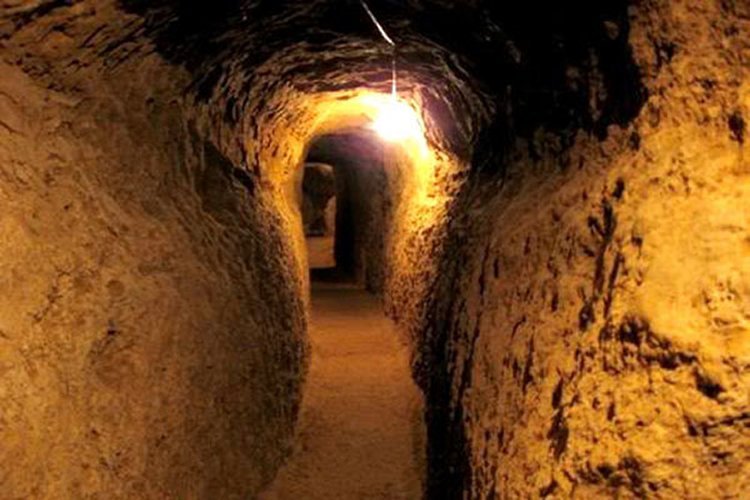
People could live in underground passages and room for several days without the need of going outside. Photo credits: Iran Front Page
There is also a reason why the city is called Nushabad ("city of cold tasty water"). In ancient times, one of the Sassanian kings was passing through the area and stopped to drink water from a well. As this water extremely clear and cold, the ordered to build a city around the well and name it Anoushabad which eventually became known as Nushabad.
Historical evidence indicates that Nushabad was mainly used as a shelter by people during the Mongol invasion in Iran in the 13th century and remained in use in emergency cases until the late Qajar dynastic period (1787-1921).
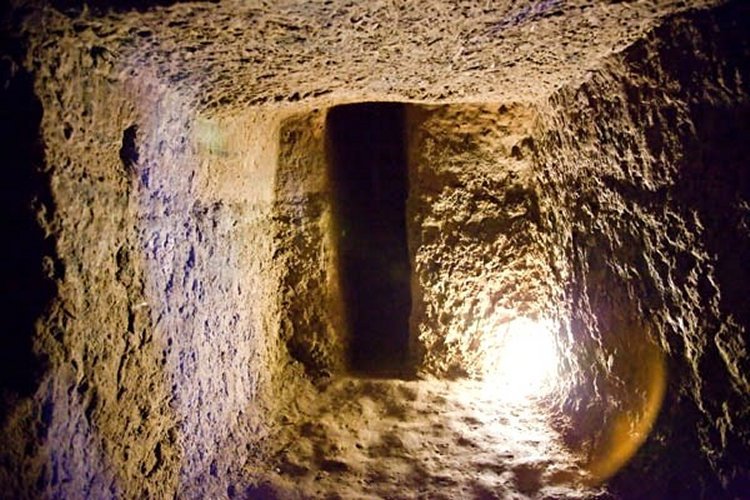
The three levels in this underground city were cleverly planned in a way that going to the different levels required moving from down to up. Photo credits: Iran Front Page
Some years ago, archaeologists made several interesting discoveries in the underground city of Nushabad. The excavations resulted in the discovery of large numbers of historic evidence including earthenware vessels and stone instruments dated to Sassanid (224-651 CE), Ilkhanid (1256-1336), and Safavid (1501-1736) dynastic periods.
They also found intricate canals, a number of chambers with different plans constructed in different stories, staircases, wells, and the path of aqueducts inside the city. It soon became obvious that different levels of this city were connected to each other through vertical and horizontal canals.
There are also some big stones similar to millstones next to every canal which were closed down while people were hiding in the lower stories.
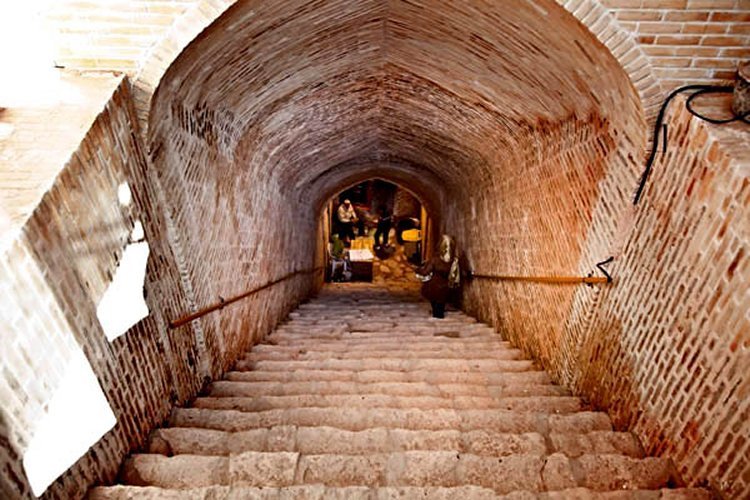
The three levels in this underground city were cleverly planned in a way that going to the different levels required moving from down to up. Photo credits: Iran Front Page
Excavations of Noushabad revealed that the ventilation system used in the underground city, through devising canals made it possible for the refugees to breathe even at a depth of 20 meters below the ground. The underground city was a perfect shelter for all people in need.
The depth of this underground city varies from 4 to 18 meters and the different spaces formed by carving the rocks seem a little frightening.
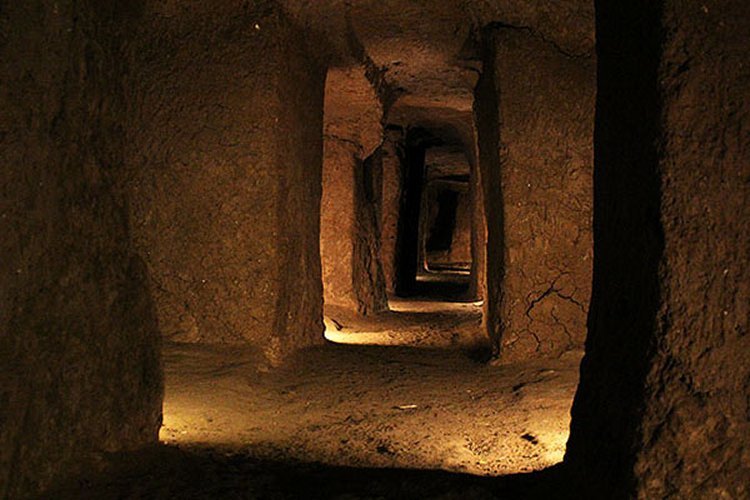
Ventilation system used in the underground city through devising canals made it possible for the refugees to breathe even at a depth of 20 meters below the ground. Photo credits: Iran Front Page
In order to reach the underground city, there were several different openings. Some of these openings were located inside the houses of people while others were located in important gathering places such as the main fort just outside the city.
People could live in underground passages and room for several days without the need of going outside. The three levels of the city were cleverly planned in a way that going to the different levels required moving from down to up.
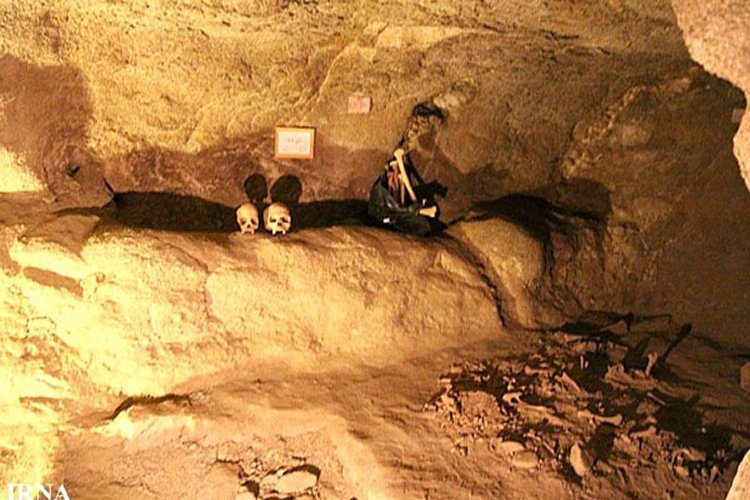
The special usage of this underground city as a place where people could take shelter defined its architectural plan. Credits: Iran Front Page
This made it easier for the people sheltering in the underground city to prevent enemies from getting to the upper levels. Another interesting feature of their architecture was the curvy passages that made it possible for the inhabitants to ambush enemies.
Except for the main entrance, all the other parts of the city were about 170-180 centimeters in height to let people pass without any problem and several raised platforms were created in some walls for the people to sit.
Digging of deep holes in the middle of the rooms and covering them with rotating stones that would fall down if anyone stepped on them, was one of several tricks used to resist enemies and protect people in the underground city.
Written by – A. Sutherland AncientPages.com Staff Writer
Copyright © AncientPages.com All rights reserved. This material may not be published, broadcast, rewritten or redistributed in whole or part without the express written permission of AncientPages.com
Expand for referencesMore From Ancient Pages
-
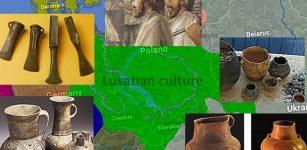 Lusatian Culture: Ancient Traders Of Central Europe Built Strongly Fortified Settlements To Withstand Scythian Attacks
Civilizations | Jan 27, 2024
Lusatian Culture: Ancient Traders Of Central Europe Built Strongly Fortified Settlements To Withstand Scythian Attacks
Civilizations | Jan 27, 2024 -
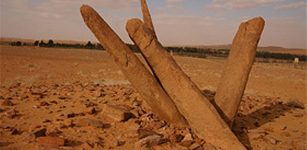 Stones Of Rajajil – Sophisticated Road Markers Or An Ancient Astronomical Observatory?
Civilizations | May 21, 2017
Stones Of Rajajil – Sophisticated Road Markers Or An Ancient Astronomical Observatory?
Civilizations | May 21, 2017 -
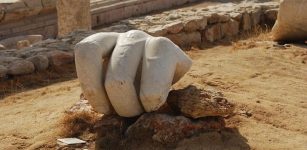 Mystery Of The Giant Hand At The Temple Of Hercules
Featured Stories | Jul 17, 2019
Mystery Of The Giant Hand At The Temple Of Hercules
Featured Stories | Jul 17, 2019 -
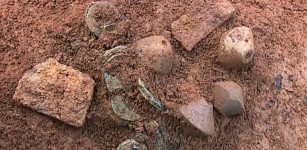 2,000-years-old tomb found in S. China
Archaeology | Apr 6, 2016
2,000-years-old tomb found in S. China
Archaeology | Apr 6, 2016 -
 How Greenland Got The ‘Wrong’ Name Thanks To Viking Erik The Red
Ancient History Facts | Mar 21, 2017
How Greenland Got The ‘Wrong’ Name Thanks To Viking Erik The Red
Ancient History Facts | Mar 21, 2017 -
 Ancient Knowledge Of Levitation And Antigravity
Ancient Technology | Jan 24, 2016
Ancient Knowledge Of Levitation And Antigravity
Ancient Technology | Jan 24, 2016 -
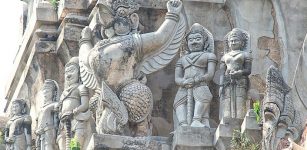 Sacred Bird Garuda And Stealing Of Amrita Drink Of Immortality From The Gods
Featured Stories | Jun 5, 2019
Sacred Bird Garuda And Stealing Of Amrita Drink Of Immortality From The Gods
Featured Stories | Jun 5, 2019 -
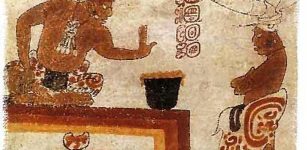 Chocolate Was Invented In Mesoamerica 1900 B.C.
Ancient History Facts | Jan 17, 2016
Chocolate Was Invented In Mesoamerica 1900 B.C.
Ancient History Facts | Jan 17, 2016 -
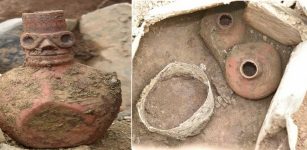 Wari Culture: Ancient Astronomical Observatory Excavated In Cusco, Peru
Archaeology | Dec 20, 2017
Wari Culture: Ancient Astronomical Observatory Excavated In Cusco, Peru
Archaeology | Dec 20, 2017 -
 Vishnu: Supreme, Universal Hindu God Whose Avatars Reach Nations, Cultures And Races
Featured Stories | Jul 25, 2019
Vishnu: Supreme, Universal Hindu God Whose Avatars Reach Nations, Cultures And Races
Featured Stories | Jul 25, 2019 -
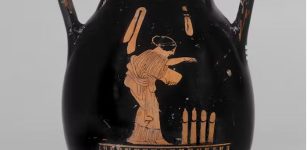 The Long And Satisfying 28,000-Year History Of The Dildo
Featured Stories | Feb 27, 2023
The Long And Satisfying 28,000-Year History Of The Dildo
Featured Stories | Feb 27, 2023 -
 5 Lessons From Ancient Civilizations For Keeping Homes Cool In Hot, Dry Climates
Featured Stories | Sep 16, 2024
5 Lessons From Ancient Civilizations For Keeping Homes Cool In Hot, Dry Climates
Featured Stories | Sep 16, 2024 -
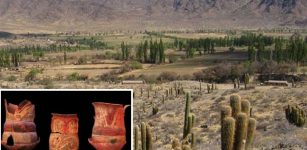 Pre-Inca Societies In The Andes Lacked Hierarchical Leadership And Shared Power Before The Incas Arrived
Archaeology | Dec 13, 2017
Pre-Inca Societies In The Andes Lacked Hierarchical Leadership And Shared Power Before The Incas Arrived
Archaeology | Dec 13, 2017 -
 Tyrfing And Gram: Two Magical Swords And Hervor’s Death In Norse Mythology
Featured Stories | Apr 23, 2016
Tyrfing And Gram: Two Magical Swords And Hervor’s Death In Norse Mythology
Featured Stories | Apr 23, 2016 -
 Kanishka Casket – Beautiful Ancient Buddhist Treasure In Gilded Copper
Featured Stories | Jun 14, 2021
Kanishka Casket – Beautiful Ancient Buddhist Treasure In Gilded Copper
Featured Stories | Jun 14, 2021 -
 Vatican Secrets – Extraterrestrial Life And Genetically Engineering Of Humans By Advanced Alien Species
Featured Stories | Oct 6, 2018
Vatican Secrets – Extraterrestrial Life And Genetically Engineering Of Humans By Advanced Alien Species
Featured Stories | Oct 6, 2018 -
 Werewolf – Ancient Worldwide Belief In Terrible Curse
Myths & Legends | Jun 28, 2021
Werewolf – Ancient Worldwide Belief In Terrible Curse
Myths & Legends | Jun 28, 2021 -
 Neanderthals: The Oldest Art In The World Wasn’t Made By Humans
Featured Stories | Jan 17, 2023
Neanderthals: The Oldest Art In The World Wasn’t Made By Humans
Featured Stories | Jan 17, 2023 -
 Magnetic Compass Was Invented In Ancient China
Ancient History Facts | Mar 18, 2016
Magnetic Compass Was Invented In Ancient China
Ancient History Facts | Mar 18, 2016 -
 Legend Of Evil Spearfinger And The Cherokee Who Were Guided By Celestial Beings
Featured Stories | Feb 17, 2020
Legend Of Evil Spearfinger And The Cherokee Who Were Guided By Celestial Beings
Featured Stories | Feb 17, 2020
